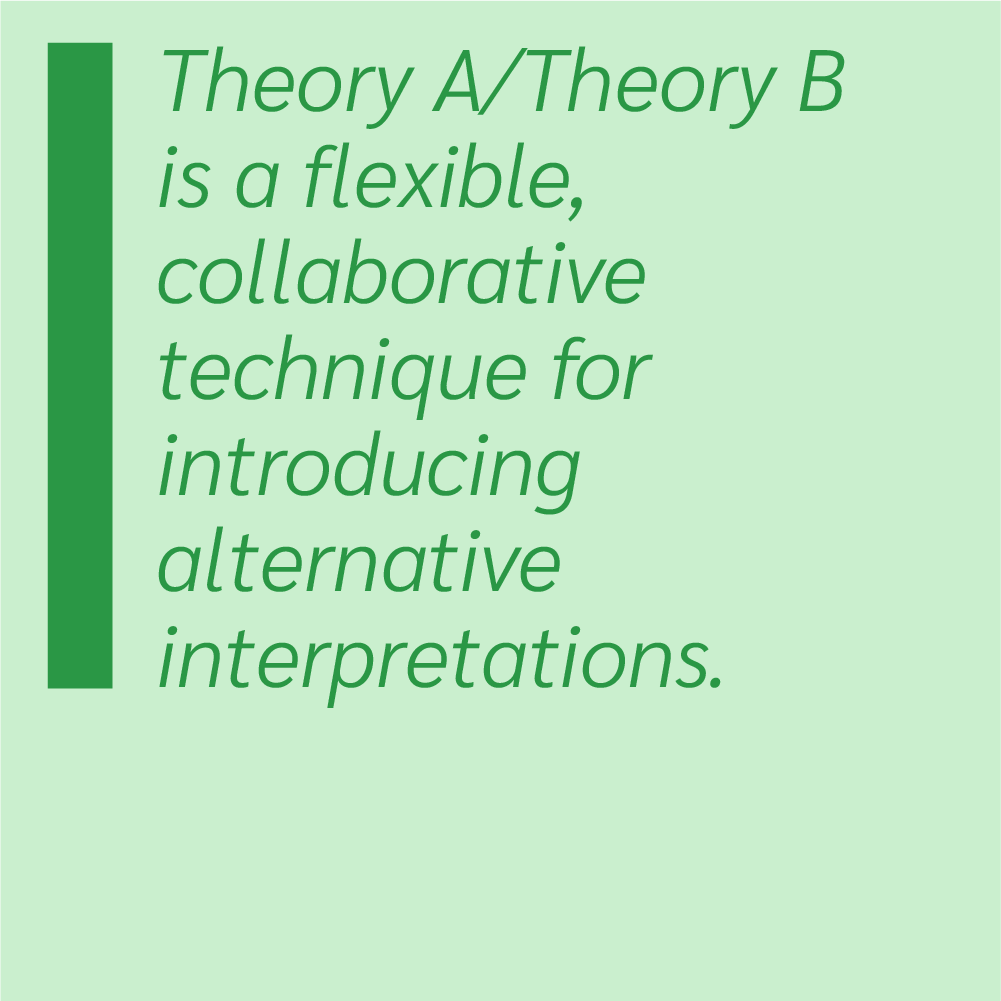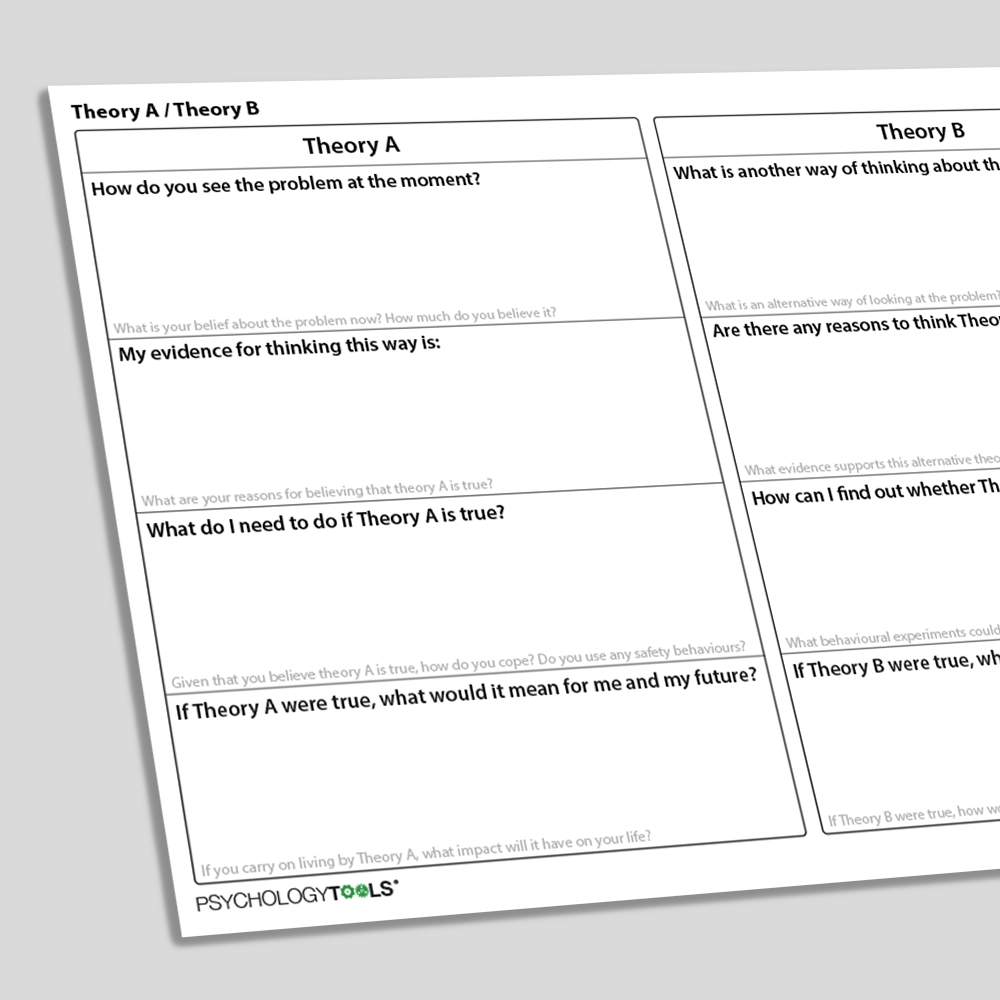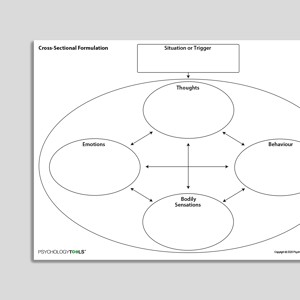Theory A / Theory B
Download or send
Related resources
Tags
Languages this resource is available in
Problems this resource might be used to address
Techniques associated with this resource
Introduction & Theoretical Background
“The most effective way of changing a misinterpretation … is to help the person come up with an alternative, less threatening interpretation of his or her experience.” (Salkovskis, 1996)
Human beings actively try to understand their world and what happens to them. The clients we see in therapy are no exception. Clients who are struggling with difficulties often hold on to beliefs which help them to explain what is happening. For example:
- The client with panic disorder believes that her racing heart means that she is likely to have a heart attack.
- The client with obsessive compulsive disorder (OCD) believes that his intrusive thoughts of children means that he is a paedophile.
- The client with post-traumatic stress disorder (PTSD) believes that her flashbacks mean that the perpetrator of her abuse is nearby and that she is in danger.
One problem is that the beliefs
Therapist Guidance
This technique can be used when clients hold threatening beliefs about their experiences (theory A) – for example, that these experiences are dangerous to themselves, or to those around them. A helpful approach is to introduce the possibility of there being an alternative or competing hypothesis (Theory B).
Helpful analogies include those of a scientist or police detective.
- Scientist: When science works well, a scientist will start with some data – some facts or observations – and then they will try to develop a theory to explain the facts. Sometimes the theory will be wrong, but that’s OK because finding out that it’s wrong means that the scientist can come up with a better – more accurate – theory. As an example, an ancient belief was that tooth decay was caused by a ‘tooth worm’. In the 17th century a French physician came up with a new theory that
References And Further Reading
- Wells, A. (1997). Cognitive therapy for anxiety disorders. John Wiley & Sons.
- Salkovskis, P. M. (1997). Frontiers of cognitive therapy. Guilford.
- Salkovskis, P. M., Bass, C. (1997). Hypochondriasis. In The Science and Practice of Cognitive Behaviour Therapy (eds Clark & Fairburn). Oxford: Oxford University Press.







